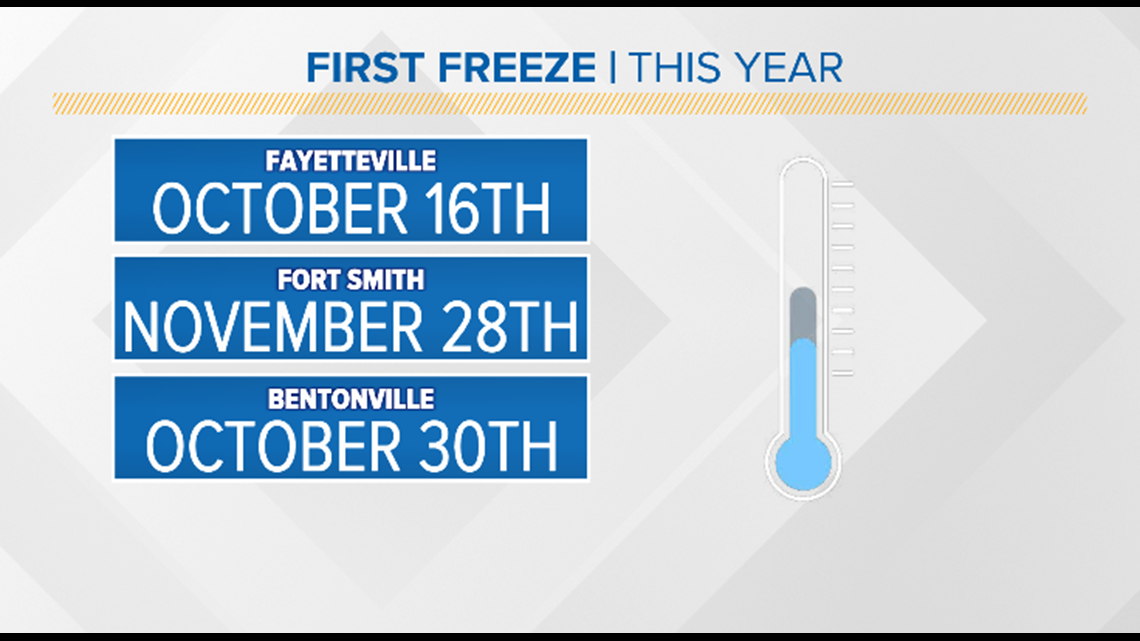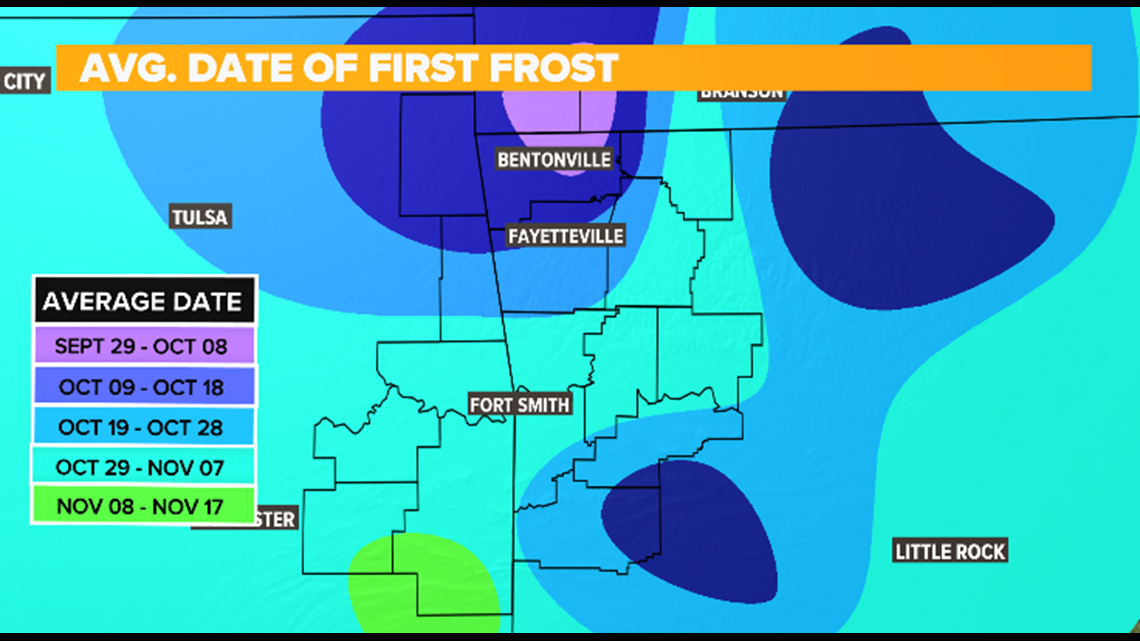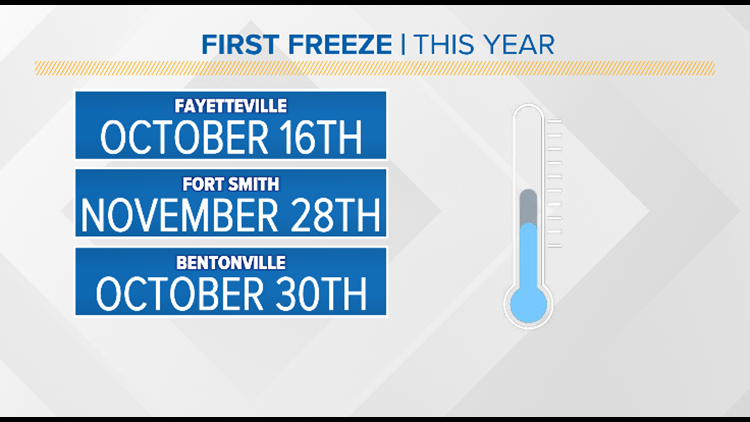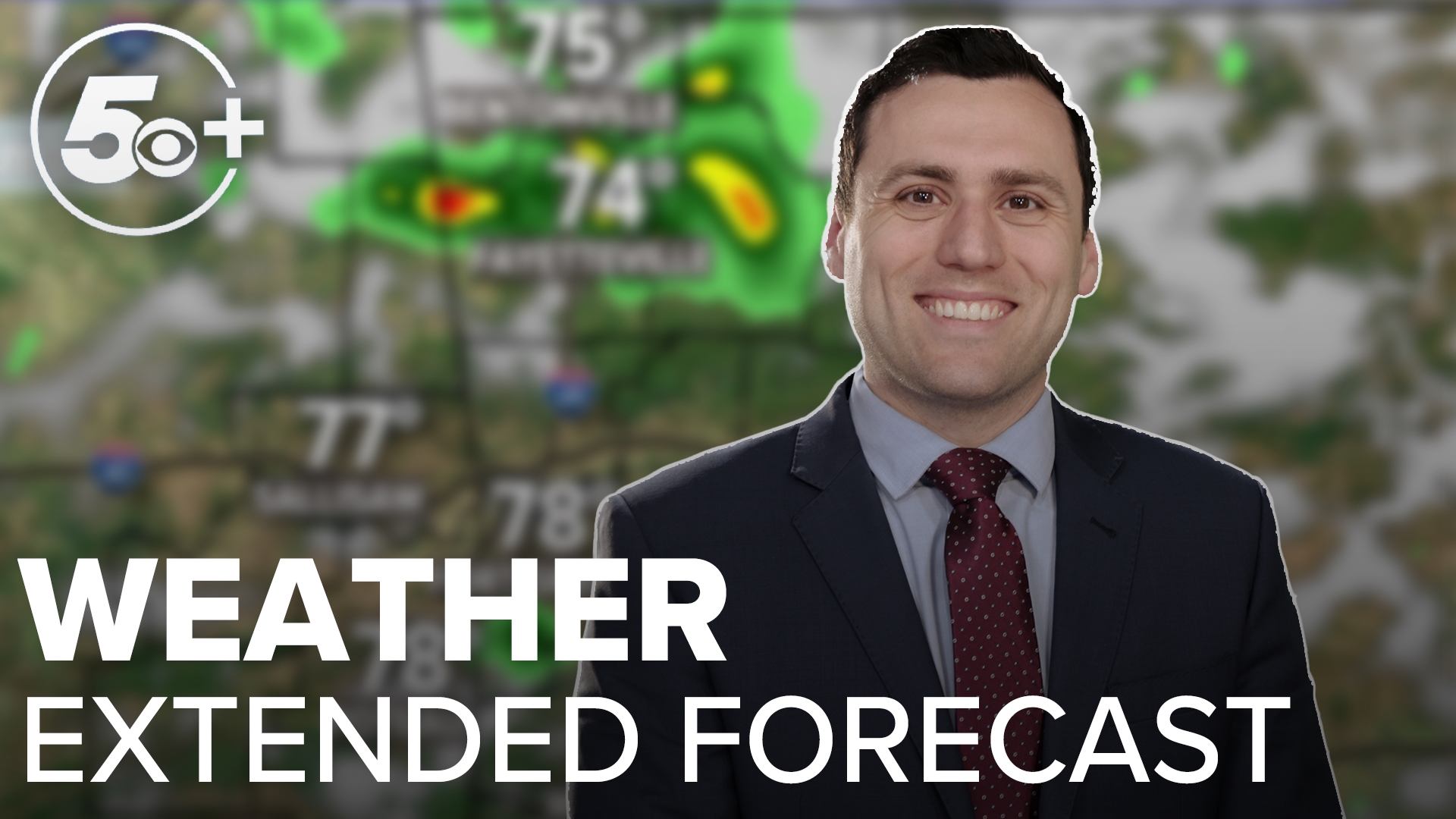The cold temperatures are starting to become a common thing as we get closer to winter, which technically starts December 21st. We have already seen our first freeze of the year in many places, but is it common to see our first freeze this early? What about first frost?
The first freeze marks the date in which temperatures dip to or below 32°F for the first time of the year.
According to the National Weather Service, many locations in Arkansas see their first freeze during the last weeks of October into the first week of November.


The first freeze usually occurs in higher elevations first, that's why Fayetteville usually hits their first freeze before other cities.
On average, the first freeze in Fayetteville usually occurs around October 26th and for the River Valley it usually occurs around November 6th.
The first freeze this year in Fayetteville was earlier than average on October 16th, while Fort Smith saw their first freeze a few weeks later than average on November 28th.
What is the difference between frost advisory and freeze warning?
A frost advisory is issued when temperatures are expected to fall between 32°F and 36°F, while a freeze warning is issued when temperatures are expected to fall below 32°F.


The average date for the first frost in NW Arkansas is usually in mid-October, around October 15th and in early November in the River Valley.
For this year, the first frost for NW Arkansas occurred around average. The first frost advisory was issued October 15th.


What weather conditions are needed for a frost to occur?
Frost occurs when water vapor (gas) becomes a solid, forming ice crystals on outdoor surfaces. For a frost advisory to be issued temperatures need to be between 32-36°F with clear skies and calm winds.


Whenever there is a freeze or a frost advisory, it is always best to remember to take care of the three P's - pets, plants, and pipes!
- Michelle


